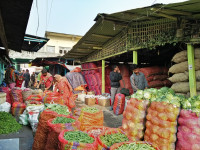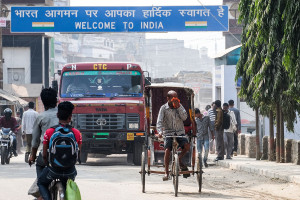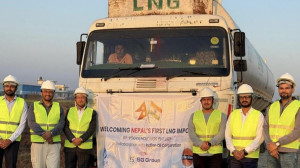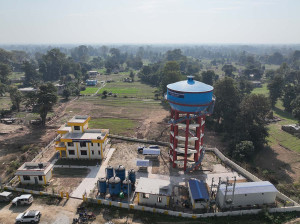Money
Indian tourists welcome, not their cash: The paradox of spending in Nepal
Tourists face spending limits due to India’s rules and Nepal’s ban on high-value IC notes.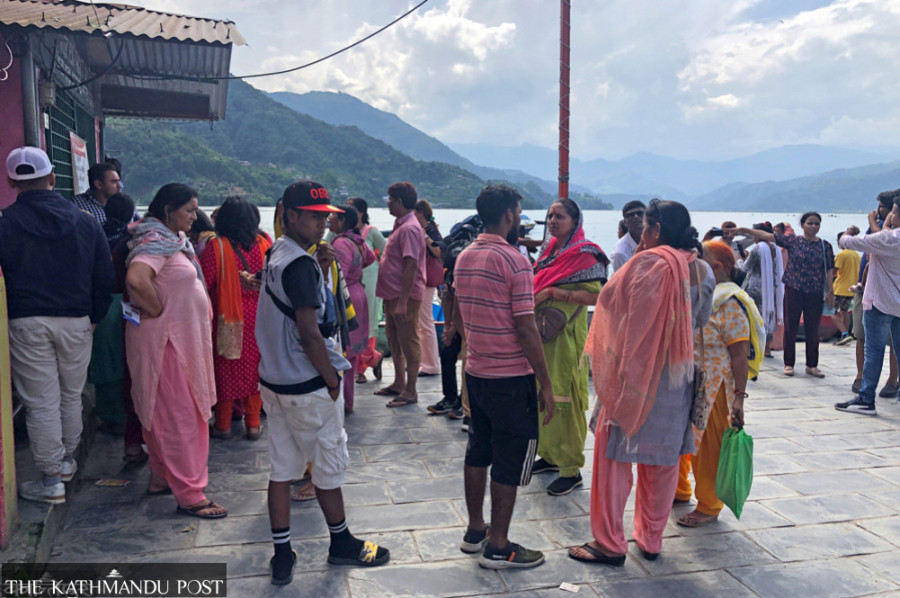
Sangam Prasain
Is there a currency restriction for Indian tourists visiting Nepal? The central bank says no. If so, why are tourism entrepreneurs bothered?
There is a cloud of confusion.
Last week, during a pre-budget discussion in Kathmandu, Chandra Prasad Dhakal, president of the Federation of Nepalese Chambers of Commerce and Industry (FNCCI), called on the government to revise the existing currency limit for Indian tourists.
Specifically, he urged the authorities to allow Indian visitors arriving by land to carry up to the equivalent of $5,000 in Indian rupees, instead of the current cap of INR25,000. He argued that the present limit is too low for a country aiming to expand its tourism industry by attracting more Indian travellers.
The business community leader questioned why the same provision that permits air travellers to bring up to $5,000 cannot also apply to those entering via land. Dhakal emphasised that India has seen rapid economic growth over the past 15 years, with approximately 15 million new members joining the middle class, especially in regions bordering Nepal. This presents an opportunity for Nepal to draw in more tourists from its southern neighbour, he said.
The issue has been discussed even in Parliament. On February 25, 2024, Nepali Congress lawmaker Sunil Sharma raised the matter, urging the government to revise what he described as an outdated and restrictive regulation.
Sharma cited the arrest of a Turkish cardiologist at Tribhuvan International Airport on February 3 for carrying INR96,000, which exceeded the allowed limit. The lawmaker questioned what kind of message Nepal was sending to the international community by arresting tourists for carrying money intended for spending.
However, officials from Nepal Rastra Bank, the country’s central bank, maintain that Nepal does not impose such restrictions.
According to Revati Prasad Nepal, head of the Foreign Exchange Management Department, Nepal allows tourists to bring up to $5,000 or its equivalent in convertible currency, provided any amount exceeding that is declared upon arrival. He clarified that this rule applies to all tourists, regardless of whether they enter the country by air or land.
He pointed out a common misconception circulating in border towns—that Indian tourists travelling overland can carry only INR25,000. This, he explained, is not a Nepali regulation.
Is it an Indian regulation, then?
The confusion stems from a 2015 decision by the Reserve Bank of India, which capped the amount Indian citizens could carry in high-denomination notes while travelling to Nepal and Bhutan at INR25,000. Since then, it has remained unchanged.
In the meantime, Indian visitors face further complications—not only is the total amount capped by Indian regulations, but the denomination of notes they carry can also land them in trouble. Tourism stakeholders explain that many Indians are unaware that currency notes above INR100 are not permitted in Nepal, leading to frequent detentions and fines.
Diwakar Khanal, president of the Regional Hotel Association in Nepalgunj, still believes the rule originates from Nepal and questions its logic. According to him, if Indian tourists visit Nepal to spend money, imposing a cash limit only hampers the tourism sector.
He also highlighted the burdensome vehicle inspections Indian tourists face at border crossings, which can delay them for several hours, discouraging travel altogether.
Khanal pointed to yet another issue—the ban on INR500 and INR1,000 denomination notes. This policy, he said, significantly affects tourism-dependent businesses such as casinos that cater to Indian clientele. Without the ability to carry larger notes, Indian tourists cannot gamble or spend freely, leading to declining revenues in border towns’ establishments.
Finance Secretary Ghanshyam Upadhyaya acknowledged widespread confusion among tourism entrepreneurs over the regulation. He stressed that Nepal’s law does allow Indian tourists to bring up to $5,000 or its equivalent.
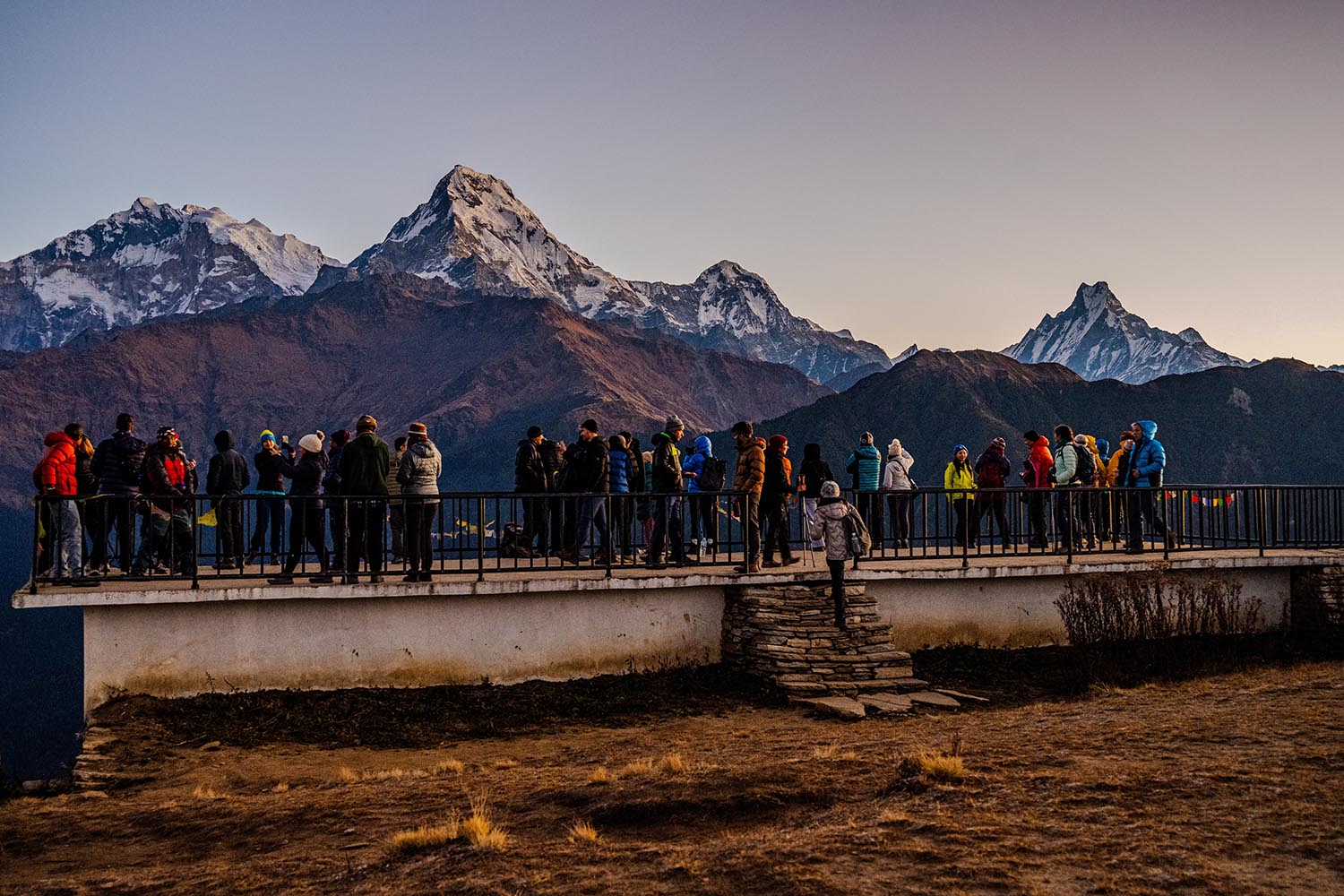
However, the continued ban on Indian currency notes above INR100 remains a major barrier. While acknowledging the grievances raised in border towns, Upadhyaya said lifting the ban on higher denominations is a decision for Nepal Rastra Bank to make.
Tourism Minister Badri Prasad Pandey recently visited Nepalgunj and the surrounding western regions to understand the problem better.
Stakeholders there urged him to consider allowing INR500 notes, at the very least, arguing that such a step would revitalise the struggling tourism sector. Nepalgunj, in particular, has seen a tourism boom since becoming a gateway for Indian pilgrims heading to Kailash Mansarovar in Tibet.
With two five-star hotels and several other high-end properties operating in the area, hoteliers believe relaxing currency restrictions could significantly benefit the economy.
Khanal emphasised the tourist-sending potential of Uttar Pradesh, India’s most populous state. With more than 260 million residents, he said, even a small fraction choosing to travel to Nepal would dramatically boost the local economy.
Chandra Prakash Shrestha, president of the Siddhartha Hotel Association and owner of Nansc Hotel in Bhairahawa, said he was once under the impression that Nepal capped the amount of money Indian tourists could bring. It wasn’t until a recent event held by Nepal Rastra Bank in Siddharthanagar that he learned about the restriction involving currency denominations, not the total amount.
Shrestha questioned why the government remains so inflexible on the INR500 note. He said the current rule forces Indian tourists to carry unwieldy bundles of INR100 notes, which is inconvenient and off-putting. Relaxing the ban would encourage more visitors and make their stay in Nepal more enjoyable.
Efforts have been made to address the issue through digital solutions.
Since March 1 of last year, Indian tourists have been able to make payments via mobile apps using QR codes. This has eased some burden, particularly in urban areas, but entrepreneurs say the system remains patchy, especially in remote trekking regions where infrastructure is poor. This is problematic as many Indian tourists are now venturing into adventure travel and mountaineering.
Exact statistics on overland Indian tourists are scarce. However, before the 2015 earthquake, a study by the Nepal Tourism Board indicated that around 1.2 million Indians visited Nepal by land annually. Officials now estimate that the figure may have risen to 2 million, although many are not officially recorded as tourists. By contrast, 317,773 Indian tourists entered Nepal by air last year.
The average stay for overland Indian tourists is 5.8 days, with an estimated spending of Rs11,310 per person. These unregistered visitors often keep border hotels busy, especially during the off-season months from June to August, when many come to Nepal to escape the intense heat of northern India. Popular destinations like Chitwan and Pokhara also benefit from this trend.
On December 13, 2018, the Cabinet published a notification in the Nepal Gazette prohibiting the use of Indian currency notes above the INR100 denomination.
The decision met with intense criticism from the travel industry, which argued that it undermined Nepal’s ambitious Visit Nepal 2020 campaign to attract at least two million tourists.
They pointed out that as most Indian visitors come by land and prefer to use the Indian currency, asking them to exchange their money into dollars or euros was impractical. For many, one of the main appeals of visiting Nepal was the ability to spend money in their currency.
The current restrictions trace back to November 8, 2016, when the Indian government abruptly demonetised INR500 and INR1,000 notes to curb corruption and black money. In response, Nepal Rastra Bank also banned these denominations.
Later, on January 21, 2019, Nepal’s central bank issued a circular prohibiting Nepali citizens, financial institutions, and businesses from holding or trading Indian banknotes above INR100. This included the new INR200, INR500, and INR2,000 notes introduced by the Reserve Bank of India following the demonetisation drive.
Previously, Nepal had allowed its citizens to carry Indian banknotes of INR500 and INR1,000, which aligns with India’s policy. However, in the current regulatory landscape, there is no such flexibility.
Rastra Bank officials say they have not discussed lifting the restriction with their Indian counterparts because the relationship between the two neighbours has always been topsy-turvy.
The continued confusion over currency limits and outdated denomination restrictions poses a significant challenge to Nepal’s tourism industry.
While central bank officials insist there is no cap on the total amount of money Indian tourists can bring, lack of clarity and frequent arrests suggest otherwise. Until Nepal and India coordinate more closely to revise and align their currency policies, Indian tourists will continue to face unnecessary obstacles, much to the detriment of Nepal’s tourism, said Shrestha, the tourism entrepreneur.




 18.12°C Kathmandu
18.12°C Kathmandu
